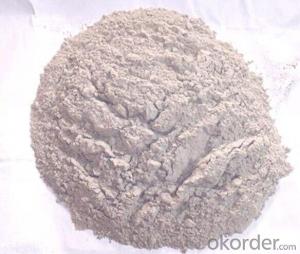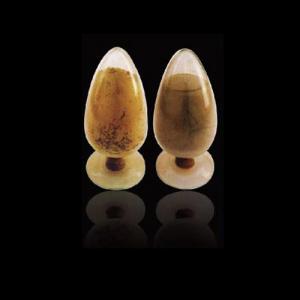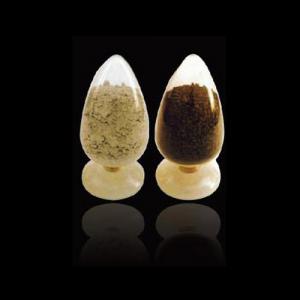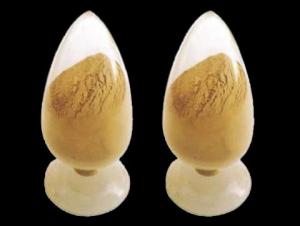LIGHT WEIGHT HEAT INSULATING CASTABLE
- Loading Port:
- China Main Port
- Payment Terms:
- TT OR LC
- Min Order Qty:
- -
- Supply Capability:
- -
OKorder Service Pledge
OKorder Financial Service
You Might Also Like
Specifications
insulating castable refractory
1.high strength
2.high service temperature
3.good thermal shock resistance
This Low Density Castable have the characteristics as below:
1 Low density
2 High Strength
3 Good acid resistance
4 Good alkali resistance
Low Density castable Application:
It is suitable for middle and low temperature furnace linings,ceiling and mobile cover.
Main Physical and Chemical Characteristics
Name | Light Corundum mullite castable | Light Floating Bead Ceramisite Castable | Light alkali-resisting castable | Super-light castable | ||||
NO. | CB-10 | CB-13 | QJ-120 | QJ-80 | CQ-12D | CQ-13D | CQ-450 | |
Bulk Density(110°Cdried) | 1.0 | 1.3 | 1.2 | 0.8 | 1.5 | 1.7 | 0.45 | |
Temperature of linear change is no more than 1.5% after3h in the constant Temp.(°C) | 1500 | 1450 | 1200 | 1000 | 1200 | 1300 | 950 | |
Cold Crushing strength(Mpa) | 110°C dried | 7.5 | 8 | 7.8 | 7.2 | 35 | 40 | 5.5 |
1000°C×3h | 30 | 30 | 12.5 | 12 | 30 | 35 | 6.5 | |
Heat Conductivity W/m.k | 0.35 | 0.35 | 0.31 | 0.26 | 0.26 | 0.35 | 0.26 | |
Index of thermal expansion 1000°C % | 0.55 | 0.65 | 0.75 | 0.40 | 0.40 | 0.40 | 0.20 | |
Max working temperature°C | 1450 | 1500 | 1350 | 1250 | 1300 | 1300 | 980 | |
Al2O3% | >70 | >65 | >30 | >30 | >35 | >40 | >35 | |
SiO2% | <22 | <25 | <45 | <45 | <50 | <45 | <55 | |
- Q:What are the recommended installation techniques for monolithic refractories?
- The recommended installation techniques for monolithic refractories typically involve proper surface preparation, mixing of refractory materials, and precise application. It is crucial to clean and remove any loose debris from the substrate before installation. The refractory materials should be mixed thoroughly with the appropriate water content to achieve the desired consistency. It is recommended to use vibration or tamping techniques during application to remove air pockets and ensure proper compaction. Careful curing and drying processes should be followed to prevent thermal shock and achieve optimal performance.
- Q:What are the considerations for selecting monolithic refractories for reheating furnaces?
- When selecting monolithic refractories for reheating furnaces, there are several important considerations to take into account. 1. Temperature requirements: Reheating furnaces operate at high temperatures, so it is crucial to choose monolithic refractories that can withstand the desired temperature range without experiencing significant thermal degradation or failure. The refractories must have a high refractoriness to maintain their structural integrity under these conditions. 2. Thermal shock resistance: Reheating furnaces often undergo rapid temperature changes due to the heating and cooling cycles. Monolithic refractories with good thermal shock resistance are essential to prevent cracking and spalling, which can lead to premature failure of the lining. 3. Mechanical strength: The monolithic refractories should have sufficient mechanical strength to withstand the stresses induced by the weight of the materials being heated and any mechanical movements within the furnace. This helps to prevent deformation or structural failure of the refractory lining. 4. Chemical compatibility: The refractories must be chemically compatible with the atmosphere and process gases present in the reheating furnace. They should resist chemical attacks from the gases or any corrosive substances generated during the reheating process. This ensures a longer service life for the refractory lining. 5. Abrasion resistance: Reheating furnaces often handle abrasive materials, such as hot billets or slabs. Selecting monolithic refractories with good abrasion resistance will help to minimize wear and extend the lifespan of the lining. 6. Ease of installation: Monolithic refractories offer advantages in terms of ease of installation compared to traditional brick refractories. However, it is important to consider the installation method and time required for the chosen monolithic refractory. Some monolithic refractories may require specialized equipment or techniques for installation. 7. Cost-effectiveness: While the initial cost of monolithic refractories may be higher than traditional brick refractories, their longer service life and ease of installation can result in overall cost savings. Assessing the cost-effectiveness of different monolithic refractory options is crucial for selecting the most suitable one for the reheating furnace. By considering these factors, one can make an informed decision when selecting monolithic refractories for reheating furnaces, ensuring optimal performance, durability, and cost-effectiveness.
- Q:How do monolithic refractories contribute to the overall reliability of iron and steel processes?
- Monolithic refractories play a significant role in enhancing the overall reliability of iron and steel processes. These refractories are specifically designed to withstand extreme temperatures and harsh conditions found in iron and steel manufacturing environments. One key contribution of monolithic refractories is their ability to provide superior insulation. They have low thermal conductivity, which significantly reduces heat loss from the furnace or kiln. This insulation property allows for efficient energy usage and helps maintain stable operating conditions, leading to consistent and reliable production. Additionally, monolithic refractories offer excellent resistance to chemical attacks from molten metals, slag, and other corrosive substances. They can withstand the high alkalinity and high temperature of molten iron and steel, preventing any damage to the refractory lining. This resistance ensures the longevity of the refractory material, minimizing the need for frequent maintenance and replacement, thus contributing to the overall reliability of the iron and steel processes. Moreover, monolithic refractories exhibit good mechanical strength and stability, even at elevated temperatures. This strength allows them to withstand the mechanical stresses and strains exerted during the iron and steel manufacturing processes, such as thermal cycling, mechanical impact, and abrasion. By maintaining their structural integrity, monolithic refractories prevent the formation of cracks or spalling, which could lead to downtime or even catastrophic failure. This reliability ensures uninterrupted operations and reduces the risk of costly shutdowns. Furthermore, monolithic refractories offer flexibility in terms of installation and repair. They can be easily shaped and applied to various furnace shapes and sizes, allowing for efficient lining construction. Additionally, monolithic refractories can be repaired or patched quickly, minimizing downtime and maintaining the operational reliability of the iron and steel processes. In conclusion, monolithic refractories contribute to the overall reliability of iron and steel processes by providing superior insulation, resistance to chemical attacks, mechanical strength, and flexibility in installation and repair. By ensuring consistent performance, durability, and reduced maintenance requirements, monolithic refractories play a crucial role in optimizing the efficiency and reliability of iron and steel manufacturing operations.
- Q:How do monolithic refractories perform in blast furnace taphole applications?
- Monolithic refractories perform exceptionally well in blast furnace taphole applications due to their unique characteristics and properties. Firstly, monolithic refractories are known for their superior thermal resistance. Blast furnace tapholes are exposed to extremely high temperatures and thermal shocks, making it essential to have a refractory material that can withstand these conditions. Monolithic refractories have high refractoriness, meaning they can maintain their structural integrity even at elevated temperatures, ensuring the taphole remains functional. Secondly, monolithic refractories have excellent erosion and corrosion resistance. In blast furnace taphole applications, the refractory material is constantly exposed to molten metal, slag, and gases that can cause erosion and chemical reactions. Monolithic refractories are designed to resist these aggressive environments, minimizing wear and extending the service life of the taphole. Furthermore, monolithic refractories offer good thermal conductivity and insulation properties. This is crucial for blast furnace tapholes as they need to maintain a consistent and controlled flow of molten metal. The refractory material must be able to transfer heat efficiently while also providing insulation to prevent excessive heat loss, ensuring optimal performance and productivity of the blast furnace. Additionally, monolithic refractories are easy to install and repair. Blast furnace tapholes require regular maintenance due to the harsh conditions they are subjected to. Monolithic refractories can be easily shaped and applied, allowing for quick repairs or replacement of damaged areas. This reduces downtime and increases the operational efficiency of the blast furnace. In summary, monolithic refractories are highly suitable for blast furnace taphole applications due to their excellent thermal resistance, erosion and corrosion resistance, good thermal conductivity and insulation properties, as well as ease of installation and repair. These characteristics make them a reliable and effective choice for maintaining the functionality and performance of blast furnace tapholes.
- Q:In iron and steel industry, the main raw materials for blast furnace ironmaking are iron ore, coke and limestone. What's the use of limestone here?
- At high temperatures, limestone (calcium carbonate) breaks down into lime (calcium oxide, which is useful) and carbon dioxide.
- Q:How do monolithic refractories handle thermal expansion and contraction?
- Thermal expansion and contraction pose challenges that monolithic refractories are specifically designed to tackle. Unlike traditional brick or tile refractories, these materials are composed of a single solid structure. This unique composition allows them to better accommodate the thermal stresses associated with temperature changes. One method employed by monolithic refractories to manage thermal expansion and contraction is their ability to endure high temperatures. These materials are engineered to have a high melting point, enabling them to preserve their structural integrity even in extreme heat conditions. This characteristic prevents them from cracking or disintegrating due to thermal expansion. Additionally, monolithic refractories often contain a binder or bonding agent that holds the refractory particles together. This binder can be formulated to possess a certain level of flexibility, enabling the material to expand and contract without incurring cracks or breaks. This flexibility aids in absorbing the stresses caused by thermal expansion and contraction, ensuring the long-lasting performance of the refractory. Furthermore, monolithic refractories can be applied in a manner that allows for expansion and contraction. Installers can leave joints or gaps between sections, which accommodate the movement caused by temperature changes. This technique, referred to as joint design or expansion joint systems, permits the refractory to expand and contract without causing any harm to the overall structure. Overall, monolithic refractories are designed to handle thermal expansion and contraction by withstanding high temperatures, incorporating flexible binders, and employing joint design techniques. These properties enable them to maintain their structural integrity and performance in extreme heat conditions, making them a reliable choice for applications that necessitate resistance to thermal stress.
- Q:How do monolithic refractories impact the overall productivity of iron and steel operations?
- The overall productivity of iron and steel operations is greatly enhanced by monolithic refractories. These refractories are specifically designed to withstand extreme temperatures, chemical reactions, and mechanical stress that occur during production. One important way that monolithic refractories impact productivity is by reducing downtime and increasing operational efficiency. These refractories have high thermal conductivity and are resistant to thermal shock, allowing them to maintain stable temperatures within the furnace. This prevents sudden temperature fluctuations that can lead to equipment failure and production delays. As a result, the production process can continue uninterrupted, leading to increased productivity. Furthermore, monolithic refractories offer superior corrosion resistance, preventing the erosion and degradation of furnace linings. This resistance to chemical attacks from molten metals and slag helps prolong the lifespan of the refractory lining, reducing the need for repairs and replacements. This leads to less downtime and higher productivity for iron and steel operations. Additionally, monolithic refractories enable faster installation and repair processes compared to traditional brick refractories. They have a fluid-like consistency that makes application and shaping easy, resulting in shorter installation and curing times. This quick turnaround time minimizes production interruptions during repairs or maintenance, further increasing overall productivity. Moreover, the use of monolithic refractories can optimize energy consumption in iron and steel operations. Their excellent insulation properties help retain heat within the furnace, reducing heat loss and energy waste. This improves energy efficiency and leads to cost savings, ultimately contributing to increased productivity and profitability. In conclusion, monolithic refractories have a significant impact on the productivity of iron and steel operations. Their ability to withstand extreme conditions, reduce downtime, resist corrosion, facilitate quick repairs, and optimize energy consumption all contribute to improved efficiency and productivity in the industry.
- Q:What are the key properties and characteristics of monolithic refractories?
- Monolithic refractories are a type of refractory material that are known for their ability to be shaped or installed in a single piece or without joints. These materials are typically used in high-temperature applications where traditional brick or tile refractories may not be suitable. One key property of monolithic refractories is their excellent thermal stability. They can withstand extreme temperatures without undergoing significant expansion or contraction, making them ideal for use in furnaces, kilns, and other heat-intensive environments. This property allows monolithic refractories to maintain their structural integrity and provide long-lasting performance. Another important characteristic of monolithic refractories is their high resistance to thermal shock. They can withstand rapid temperature changes without cracking or spalling, which is crucial in applications where the refractory material is exposed to alternating hot and cold conditions. This resistance to thermal shock ensures the longevity of the refractory lining and reduces the need for frequent repairs or replacements. Monolithic refractories also exhibit good mechanical strength, which enables them to withstand the mechanical stresses and loads imposed on them during use. They possess excellent load-bearing capacity and can resist abrasion, erosion, and impact, making them suitable for applications where the refractory material is subjected to mechanical wear or impact. Furthermore, monolithic refractories have the advantage of being easily installed and repaired. Unlike traditional refractories that require skilled labor and time-consuming bricklaying techniques, monolithic refractories can be cast, gunned, or sprayed into place. This ease of installation allows for faster turnaround times and reduces downtime during repairs or maintenance. Lastly, monolithic refractories offer good chemical resistance to various corrosive agents, such as acids, alkalis, and molten metals. This property makes them suitable for use in industries where the refractory material is exposed to aggressive chemical environments, such as the steel, petrochemical, and glass industries. In summary, the key properties and characteristics of monolithic refractories include excellent thermal stability, high resistance to thermal shock, good mechanical strength, easy installation and repair, and good chemical resistance. These properties make them a preferred choice in high-temperature applications where durability, reliability, and performance are of utmost importance.
- Q:How do monolithic refractories withstand the mechanical impacts in furnace door applications?
- Monolithic refractories withstand mechanical impacts in furnace door applications due to their high strength and resistance to thermal shock. These refractories are composed of dense and uniform materials, such as castables or plastics, which provide excellent structural integrity and the ability to withstand heavy loads and vibrations. Additionally, they have low porosity and high thermal conductivity, allowing them to dissipate heat efficiently and reduce the risk of cracking or spalling under mechanical stress.
- Q:What are the main factors affecting the thermal conductivity of monolithic refractories?
- The main factors affecting the thermal conductivity of monolithic refractories are the composition of the refractory material, the density of the material, the porosity of the material, and the presence of any additives or impurities. The composition of the refractory material plays a significant role in determining its thermal conductivity. Different types of refractory materials, such as alumina-based, silica-based, or magnesia-based, have different thermal conductivities due to their varying chemical compositions. For example, materials with a higher alumina content generally have higher thermal conductivities compared to materials with a higher silica content. The density of the refractory material also affects its thermal conductivity. Generally, materials with higher densities have higher thermal conductivities because the closely packed particles allow for more efficient heat transfer. On the other hand, materials with lower densities have lower thermal conductivities as the heat transfer is hindered by the presence of air pockets or voids. The porosity of the refractory material is another important factor affecting its thermal conductivity. Porosity refers to the presence of small pores or spaces within the material. Higher porosity leads to lower thermal conductivity as the air or gas trapped within the pores acts as an insulator, reducing the ability of the material to conduct heat. Therefore, materials with lower porosity tend to have higher thermal conductivities. The presence of any additives or impurities in the refractory material can also affect its thermal conductivity. Certain additives or impurities, such as carbon or metallic oxides, can enhance or inhibit heat transfer in the material. For instance, the addition of carbon can increase thermal conductivity due to its high thermal conductivity, while the presence of metallic oxides may decrease thermal conductivity due to their lower thermal conductivities. In summary, the thermal conductivity of monolithic refractories is influenced by the composition, density, porosity, and the presence of any additives or impurities. Understanding and controlling these factors are crucial in designing and selecting refractory materials with optimal thermal conductivity for specific applications.
1. Manufacturer Overview |
|
|---|---|
| Location | |
| Year Established | |
| Annual Output Value | |
| Main Markets | |
| Company Certifications | |
2. Manufacturer Certificates |
|
|---|---|
| a) Certification Name | |
| Range | |
| Reference | |
| Validity Period | |
3. Manufacturer Capability |
|
|---|---|
| a)Trade Capacity | |
| Nearest Port | |
| Export Percentage | |
| No.of Employees in Trade Department | |
| Language Spoken: | |
| b)Factory Information | |
| Factory Size: | |
| No. of Production Lines | |
| Contract Manufacturing | |
| Product Price Range | |
Send your message to us
LIGHT WEIGHT HEAT INSULATING CASTABLE
- Loading Port:
- China Main Port
- Payment Terms:
- TT OR LC
- Min Order Qty:
- -
- Supply Capability:
- -
OKorder Service Pledge
OKorder Financial Service
Similar products
New products
Hot products
Related keywords


























